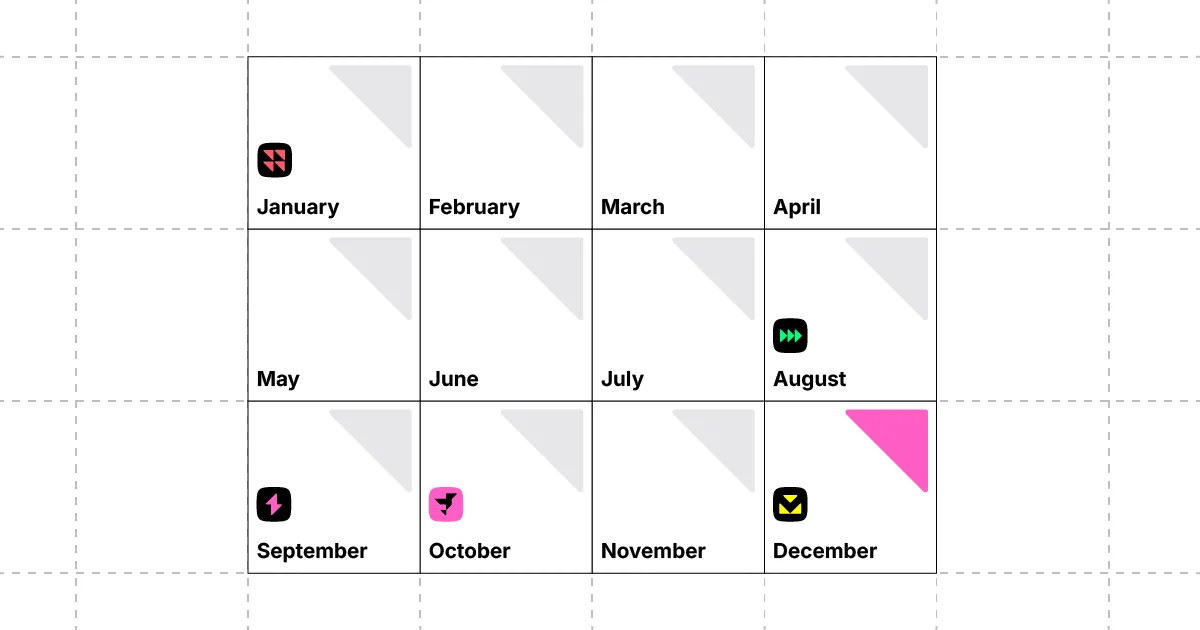Wrapping up 2024
We learned. We built. We learned some more.

And just like that we’re in December and wrapping up a year that saw a U.S Presidential election and a door fly off of a Boeing 737, among other things.
For Boostie, we’re nearly to the 1 year anniversary of our first product opening its eyes to the world.
We built a lot this year and kept our ears open. Our mission to help our customers build a more sustainable talent marketing stack while driving in quality candidates has really started to get a foothold and we’re excited for the next twelve months.
Digging into the quality problem
Nearly a year ago we launched the first part of our platform, Boostie Promote. Our goal was to identify and attract an occupation or behavior-based audience to a specific job or group of jobs.
We wanted to drive more ideal-fit traffic at the tippy-top of the funnel to reduce frustration customer on corporate & staffing sides of the fence were facing, namely under-qualified people applying to jobs they find on job boards.
What we learned was:
- We were driving a more likely occupational fit (based on converters)
- Visitors were most likely passive (based on dismal apply rates)
- Visitors were returning and applying our clients site (based on journey tracking)
We were seeing a typical buying journey, but for hiring.
Think about the last time you were targeted to buy something. You likely were targeted by an ad based on a likely buying criteria, you likely didn’t convert (the first time), you were re-targeted and eventually convert (or don’t).
This made a lot more sense when considering our audience targeting was aimed at non-job board channels. They click, they scan, they leave, they come back and so on.
Catcher’s mitts: the application
The first step was to de-couple our apply process from our A.I. generated landing pages – that was straight-forward.
But digging into the quality problem more, we found a lot of the problems were rooted at the bottom of the conversion journey. Website applications were rigid and weren’t doing anything to act as the first-filter as applicants came into the ATS.
The status quo were the essentials that most ATS’ have out of the box: first/last name, email address, resume, phone.
While that’s all fine, there are some problems:
- What about jobs that don’t require a resume
- What about skills-based questions related to the job
- What about other fields that are important for the employer
That led us to building out our question entity and our job rules engine; we pioneered automation for the recruiting industry and refuse to make things harder on our customers.
Building the first version of our rules-engine allows our customers to ask specific questions for different jobs. For example, if you’re hiring mental health therapists, why not ask for a license # or type – and if you’re hiring warehouse associates, why not ask shift preferences or if they can lift 50 pounds.
And in real-time, we’re analyzing answers and creating an index for each applicant so you can start assessing the ones who show a better fit for the role.
Here is a real example from a real customer:
- 71 applicants
- 30 applicants over the fit index threshold of 90/100
- 19 that were able to work in the U.S.A.
Out of the gate, 73.3% of applicants weren’t above the fit threshold, this gave the recruiters a clear starting point in the evaluation before submitting candidates to their customer.
Another fun stat from this job: 97% completed the application (this is typically 10%)
The best part, you can deploy this on your current website in like 5 minutes. No big code changes are necessary to start.
Catcher’s mitts: capturing intent and interest
Our last finding in our quest for quality was also mirrored on e-commerce: the behavior-based popup.
Traditional job alerts are fine, they allow a potential applicant to signup for alerts from an employer about jobs in the location and specialty areas relevant to them.
It’s a passive action on most websites (if it exists at all).
We wanted to be a little more pro-active; think about visiting an online retailer and right before you leave they dangle an offer.
We’re doing the same, just with potential jobs.
We infer a little information based on their location and web behavior and then ask for a little contact information to get the ball rolling.
This little action helps customers create and build actionable talent pools in real-time 7 days a week.
Your website is the most valuable marketing and employer branding tool you have, so why not put it to work?
Once we have a job seeker engaged with our customers’ brand, we can then ask a few more questions to help craft a more relevant experience for them and deliver jobs that they might care about.
Closing thoughts
We’ve got some fun plans for 2025, but the thing that excites me the most is that what we’re doing today and what we learned the past 12 months.
Uncovering little bits of friction and root-causes to the quality problems have been a fun exercise and we’re excited to pursue this further.
AI and automation will continue to enhance each step of our process too.
Thanks for taking a look and happy holidays.



